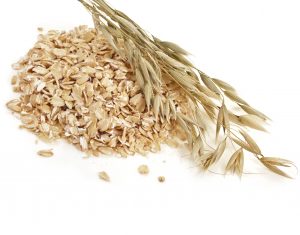Written by: Dr. Jacquie Jacob, University of Kentucky
Oats (Avena sativa) are grown primarily in cool, wet regions of the world. The composition of the grain varies widely depending on the variety, climate, and fertilizer practices.

The composition of the hull can vary by 20% to 45%, resulting in a wide range of nutrient contents across different types of oats. The amino acid profile of the protein present in oats is similar to that of wheat. Oat grain contains significantly higher levels of lysine, methionine, and cystine than other cereals.
In the past, oats were used sparingly in poultry diets primarily because, aside from having a high fiber content, oats contain beta-glucans. Beta-glucans are anti-nutritional factors that reduce nutrient availability. The availability of feed enzymes has led to renewed interest in “alternative” grains, including oats. Enzyme supplementation of oats has been shown to compensate for the antinutritional factors and improve growth performance in broilers.
Whole oats have a high fiber content. Poultry are not able to digest fiber very well, so the inclusion of oat grain in poultry diets reduces the availability of dietary energy and other nutrients. Because of this combination of high fiber and low energy, oats are better suited for use in pullet developers and breeder diets. The inclusion of oats in diets for replacement pullets has been shown to reduce mortality and cannibalism and to make the birds more resistant to the effects of heat stress. Feather pecking is a common problem in systems where the birds are not caged, and the addition of low levels of oat hulls, composing approximately 3% of the diet, during the rearing period has been shown to reduce feather pecking in flocks of laying hens. The inclusion of small amounts of oat hulls negatively impacts pellet quality.
Oats contain more oil than other cereals. The oil is rich in unsaturated fatty acids, including the essential fatty acid linoleic acid. Because of this oil content, feeding poultry diets composed of more than 25% oats is reported to cause off flavors in the chicken meat.
Nutrient content of oats
The list that follows outlines the average nutrient content of oats:
- Dry matter: 90%
- Metabolizable energy: 1160 kcal/kg (2550 kcal/lb)
- Crude protein: 11.0%
- Methionine: 020% (86% available)
- Cysteine: 0.21% (84% available)
- Lysine: 0.40% (87% available)
- Tryptophan: 0.18%
- Threonine: 0.28% (85% available)
- Crude fat: 4.0%
- Crude fiber: 10.5%
- Ash: 4.0%
- Calcium: 0.10%
- Total phosphorus: 0.25%
- Available phosphorus: 0.14%
(Source: Feedstuffs Ingredient Analysis Table 2016 edition of the Feedstuffs Reference Issue, by Amy Batal and Nick Dale, University of Georgia)
NAKED OATS
Unlike oat groats, which are whole oats that have had the hull removed through mechanical means, naked oats (Avena nuda; also called hull-less oats) lose their hulls during the harvesting process. Because they have no hulls, naked oats are lower in fiber than regular oats. They are also higher in protein, fat, and energy content. Naked oats contain the same beta-glucans as whole oats. Canadian research indicates that naked oats can compose up to 60% of the diet of laying hens, replacing the corn, soybean meal, and oil. At this level, there is no loss in production, but feed efficiency is reduced. Using diets composed of 30% naked oats had no negative effect on feed efficiency.

